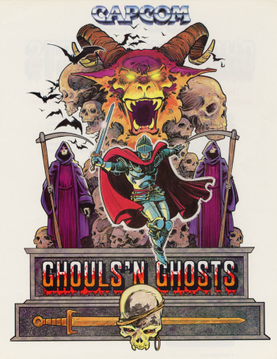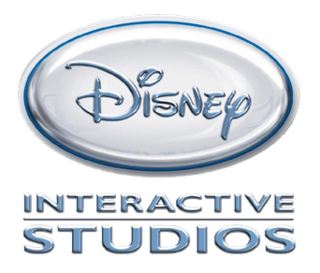
The Super Nintendo Entertainment System, commonly shortened to Super Nintendo, Super NES or SNES, is a 16-bit home video game console developed by Nintendo that was released in 1990 in Japan and South Korea, 1991 in North America, 1992 in Europe and Oceania and 1993 in South America. In Japan, it is called the Super Famicom (SFC). In South Korea, it is called the Super Comboy and was distributed by Hyundai Electronics. The system was released in Brazil on August 30, 1993, by Playtronic. In Russia and CIS, the system was distributed by Steepler from 1994 until 1996. Although each version is essentially the same, several forms of regional lockout prevent cartridges for one version from being used in other versions.

Chip and Dale are a cartoon duo of anthropomorphic chipmunks created by The Walt Disney Company, who debuted in the 1943 short film Private Pluto.
Mega Man is a Japanese science fiction video game franchise developed and published by Capcom, featuring the eponymous protagonist of the same name. The original game was released for the Nintendo Entertainment System in 1987, and spawned a franchise that expanded to over 50 games on multiple systems. As of July 2024, the series has sold 42 million units worldwide. Mega Man has been popular among gamers and has been reimagined and evolved as a video game character for over 30 years.

Chip 'n Dale: Rescue Rangers is an American animated adventure comedy television series produced by Walt Disney Television Animation. Created by Tad Stones and Alan Zaslove, it featured established Disney characters Chip 'n' Dale in a new setting. After the episode "Catteries Not Included" aired on August 27, 1988 as a preview, the series premiered on The Disney Channel on March 4, 1989. The series continued in syndication in September 1989 with a two-hour special, Rescue Rangers: To the Rescue, later divided into five parts to air as part of the weekday run. On September 18, 1989, the series entered national syndication. It often aired on afternoons along with DuckTales, and beginning on September 10, 1990, as a part of the syndicated programming block The Disney Afternoon. The final episode aired on November 19, 1990.

Ghouls 'n Ghosts, known as Dai Makaimura in Japan, is a side-scrolling platform game developed by Capcom, released as an arcade video game in 1988 and ported to home platforms. It is the sequel to Ghosts 'n Goblins and the second game in the Ghosts 'n Goblins series.

DuckTales is a platform game developed and published by Capcom and based on the Disney animated TV series of the same name. It was first released in North America for the Nintendo Entertainment System in 1989 and was later ported to the Game Boy in 1990. The story involves Scrooge McDuck traveling around the globe collecting treasure and outwitting his rival Flintheart Glomgold to become the world's richest duck.

DuckTales 2 is a platform video game developed and published by Capcom. It is a sequel to the original DuckTales based on the Disney animated series of the same name. It was released on the Nintendo Entertainment System in early 1993. The title was ported to the Game Boy handheld system in Japan and North America at the end of the year.

Darkwing Duck is a platform video game developed and published by Capcom for the Nintendo Entertainment System in 1992. It was based on the Disney animated television series Darkwing Duck. It was ported to the Game Boy in 1993.

Mega Man 3 is a 1990 action-platform game developed and published by Capcom for the Nintendo Entertainment System. It is the third game of the original Mega Man series and was originally released in Japan on September 28, 1990. The game was released in North America later in 1990 and in European regions by Nintendo in 1992. Taking place after the events of Mega Man 2, the plot follows the titular hero as he helps his creator, Dr. Light, and a supposedly former enemy, Dr. Wily, collect parts for a peace-keeping robot by defeating several Robot Masters that have gone haywire.

Mega Man 5 is a 1992 action-platform game developed by Capcom for the Nintendo Entertainment System. It is the fifth game in the original Mega Man series and was released in Japan on December 4, 1992. It saw a release during the same month in North America and in 1993 in Europe.

Disney Interactive Studios, Inc. was an American video game developer and publisher owned by The Walt Disney Company through Disney Interactive. Prior to its closure in 2016, it developed and distributed multi-platform video games and interactive entertainment worldwide.

Little Nemo: The Dream Master is a platform game released on the NES in 1990 by Capcom. It is based on the Japanese animated film, Little Nemo: Adventures in Slumberland from Tokyo Movie Shinsha, which itself is based on the comic strip Little Nemo in Slumberland by Winsor McCay. The game's music was composed by Junko Tamiya, credited in the game as "Gonzou".

Mega Man IV is an action-platform video game by Capcom for the Nintendo Game Boy. It is the fourth installment in the handheld version of the Mega Man series. The game continues the quest of the protagonist Mega Man in the struggle with his long-time nemesis Dr. Wily, who sends out a disruptive radio signal to cause a rampage, citywide destruction from dormant robots. Mega Man IV features the traditional action platforming gameplay of the prior games while introducing one new feature, the ability to purchase items with power-ups found throughout each stage. As with previous Game Boy releases, the game incorporates gameplay elements and bosses from two sequential Nintendo Entertainment System (NES) games: Mega Man 4 and Mega Man 5. The game has received a positive critical reception. In 2013, Mega Man IV was made available on the Virtual Console of Japan's Nintendo eShop for the Nintendo 3DS. It was later released in the North American and PAL region eShops the following year.

Chip 'n Dale Rescue Rangers 2 is a platform game released in December 1993 in Japan, and the following month in the United States. It is based on the Disney cartoon Chip 'n Dale Rescue Rangers, about Chip and Dale, two crime-fighting chipmunks. It is a sequel to the 1990 video game.

Snoopy's Silly Sports Spectacular!, known in Japan as Donald Duck (ドナルドダック) and based on the British home computer game, Alternative World Games, is a child-oriented sports game that was released by Kemco for the Nintendo Entertainment System on September 22, 1988.
Disney's Magical Quest is a Disney platform game trilogy released by Capcom. The games star Mickey Mouse and either Minnie Mouse or Donald Duck, who must defeat Pete. The gameplay is similar amongst all games in the series: the player must move as in a typical platform game, defeating enemies either by jumping on them or by grabbing and throwing blocks at them.

Chip 'n Dale Rescue Rangers: The Adventures in Nimnul's Castle is an action video game developed by Riedel Software Productions and co-published by Hi Tech Expressions and Walt Disney Computer Software based on the Disney animated series of the same name. The game was released in March 1990 for MS-DOS.

Mickey's Dangerous Chase, known in Japan as Mickey's Chase , is a platform video game developed by Now Production for the Game Boy. It was released in North America in 1991 and Europe in 1992 by Capcom and Japan in December 1992 by Kemco; it was later re-released by Nintendo under the Player's Choice brand, making it one of the first games to be sold under the brand.

The Disney Afternoon Collection is a compilation video game developed by Digital Eclipse and published by Capcom. It features six video games originally developed by Capcom and released for the Nintendo Entertainment System, all based on animated series from the television block The Disney Afternoon, which ran in syndication from 1990 to 1997. The compilation includes the titles DuckTales, Chip 'n Dale Rescue Rangers, TaleSpin, Darkwing Duck, DuckTales 2, and Chip 'n Dale Rescue Rangers 2. It was released on April 18, 2017, for PlayStation 4, Windows, and Xbox One.

















